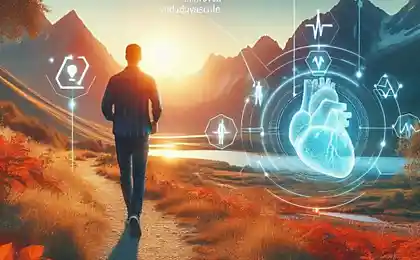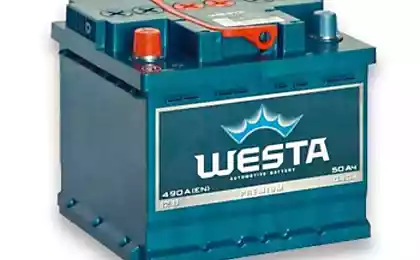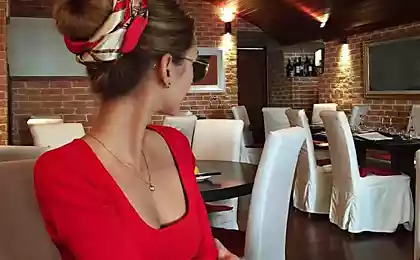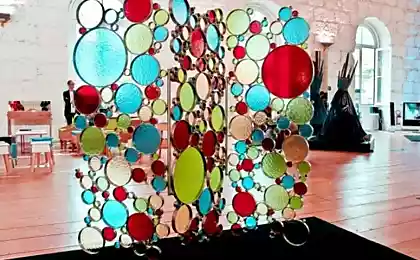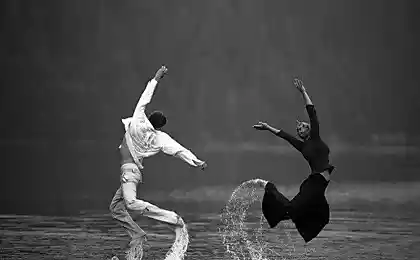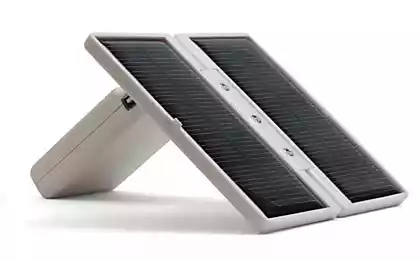531
Found a new way of obtaining energy from walking
Scientists from the University of Wisconsin in Madison came up with a simple and inexpensive way to transform the walk into usable electricity. Xudong Wang and his colleagues invented a material that generates electricity when people step on it.
New method finds a good use for this fibrous semi-finished product, like wood. Frayed wood, which is already in the floor covering, partially manufactured from nanofibers of cellulose. They are the tiny fibers that after a certain chemical treatment is capable of forming an electric charge when come in contact with raw.
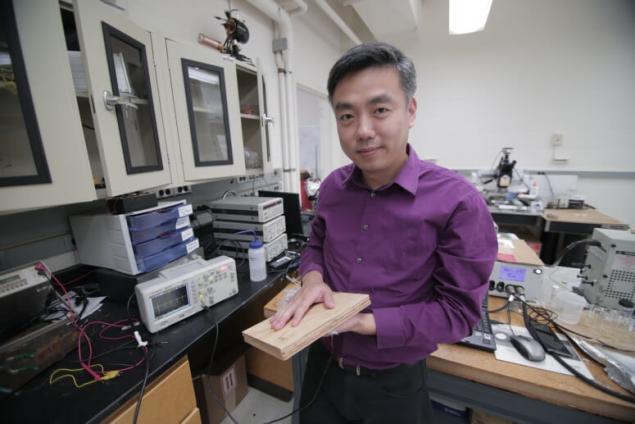
When the nanofibers embedded in the floor, they can generate electricity, which includes lights and charges the batteries. Because wood pulp is cheap, widespread and renewable wastes of many industries, new technology could be available as regular flooring materials.
To do this, the researchers drew nanofibers of cellulose from wood pulp and divided them into two layers, one of which is chemically treated to make it positively charged. Then they made both pieces in cardboard and extruded them to get a hard Board.
Under the pressure foot, two layers of cellulose come in contact and share electrons. When the leg is raised, the electrons coming back, but pass through an external circuit, producing energy. One step on such a surface generates from 10 to 30 volts and can light 35 green LEDs.
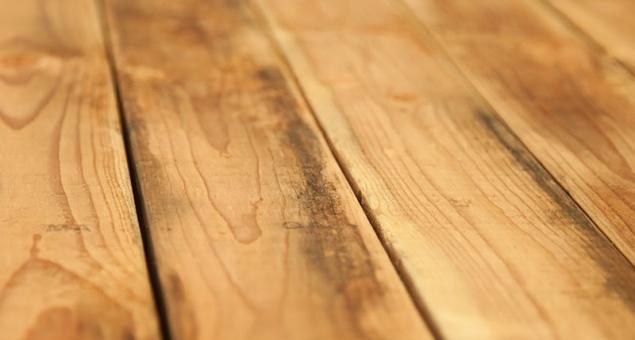
There are other similar materials for the generation of the "step" of energy – ceramics and metals. But they are either too expensive or unsuitable for reuse, or impractical for use in large scale.
For many years research center Wang tested different materials to maximize the advantages of technology, called a triboelectric nanogenerator (TENG). It is because of the triboelectric effect is produced by the static electricity on clothes. Chemically treated nanofibers of cellulose is simple, inexpensive and effective alternative to the use of this widespread mechanical energy source.
The scientist believes that the technology of TENG can be easily implemented in all types of flooring as soon as it is ready for sale. Team Wang is now planning to build and test a prototype on the campus of the University of Wisconsin in Madison in places with large flow of people. Ultimately they are going to offer to use "green" boards at railway stations and shopping malls, where they could feed the lights and sensors.
The result of the team of the University of Wisconsin in Madison is the latest achievement in the field of environmental studies and renewable energy, called "roadside collection of energy." In some situations it could compete with solar energy, as it is not dependent on clear weather. Researchers who study "roadside" methods of collecting and converting energy side, consider the earth as a rich, renewable source of energy despite limited fossil fuel reserves.
"Scientists worked hard to collect energy from human activities. One way is to build something to put out there. Another way is to build something where people have constant access. Land is the most appropriate place," — says the scientist.
If you use this technology in areas with high traffic of people, for example, in stadiums or shopping centers, we receive a significant amount of energy. Each functional part of the inside such a coating consists of two materials with different charge, including nanofibers of cellulose with a thickness of one millimeter or even thinner. Floor may consist of several layers in order to get the output more energy.
"The first test in our laboratory have shown that the technology works for millions of cycles without any problems, says Wang. We converted these figures into the life of the deck, but I think that with proper design of the TENG easily survive it (the deck)".
Despite all the apparent benefits of eco-friendly technology, some scientists were skeptical of the development of van. Alistair Sproul University of New South Wales in Sydney, believes that compared to other renewable energy sources, new material gives the output a very small amount of energy. "If you want to lead society into action and make things efficient, go solar or wind energy," he said.
Wang believes that the energy can complement solar. "The concept is to generate electricity from energy that could be wasted. It works inside buildings or underground where the sun's rays do not penetrate, or too little," he says.
Now a team led by Wang tries to prove that the new boards are durable and cost effective. The cost of production of the "energy" of the boards is practically no different from usual. However, the necessary additional costs of replacing an existing cover and installing a new one.
"Our technology can not replace the collection of solar energy. But we believe that its use as a Supplement would be the most cost-effective in comparison with other technologies can extract energy from steps." published
Source: geektimes.ru/post/281948/
New method finds a good use for this fibrous semi-finished product, like wood. Frayed wood, which is already in the floor covering, partially manufactured from nanofibers of cellulose. They are the tiny fibers that after a certain chemical treatment is capable of forming an electric charge when come in contact with raw.

When the nanofibers embedded in the floor, they can generate electricity, which includes lights and charges the batteries. Because wood pulp is cheap, widespread and renewable wastes of many industries, new technology could be available as regular flooring materials.
To do this, the researchers drew nanofibers of cellulose from wood pulp and divided them into two layers, one of which is chemically treated to make it positively charged. Then they made both pieces in cardboard and extruded them to get a hard Board.
Under the pressure foot, two layers of cellulose come in contact and share electrons. When the leg is raised, the electrons coming back, but pass through an external circuit, producing energy. One step on such a surface generates from 10 to 30 volts and can light 35 green LEDs.

There are other similar materials for the generation of the "step" of energy – ceramics and metals. But they are either too expensive or unsuitable for reuse, or impractical for use in large scale.
For many years research center Wang tested different materials to maximize the advantages of technology, called a triboelectric nanogenerator (TENG). It is because of the triboelectric effect is produced by the static electricity on clothes. Chemically treated nanofibers of cellulose is simple, inexpensive and effective alternative to the use of this widespread mechanical energy source.
The scientist believes that the technology of TENG can be easily implemented in all types of flooring as soon as it is ready for sale. Team Wang is now planning to build and test a prototype on the campus of the University of Wisconsin in Madison in places with large flow of people. Ultimately they are going to offer to use "green" boards at railway stations and shopping malls, where they could feed the lights and sensors.
The result of the team of the University of Wisconsin in Madison is the latest achievement in the field of environmental studies and renewable energy, called "roadside collection of energy." In some situations it could compete with solar energy, as it is not dependent on clear weather. Researchers who study "roadside" methods of collecting and converting energy side, consider the earth as a rich, renewable source of energy despite limited fossil fuel reserves.
"Scientists worked hard to collect energy from human activities. One way is to build something to put out there. Another way is to build something where people have constant access. Land is the most appropriate place," — says the scientist.
If you use this technology in areas with high traffic of people, for example, in stadiums or shopping centers, we receive a significant amount of energy. Each functional part of the inside such a coating consists of two materials with different charge, including nanofibers of cellulose with a thickness of one millimeter or even thinner. Floor may consist of several layers in order to get the output more energy.
"The first test in our laboratory have shown that the technology works for millions of cycles without any problems, says Wang. We converted these figures into the life of the deck, but I think that with proper design of the TENG easily survive it (the deck)".
Despite all the apparent benefits of eco-friendly technology, some scientists were skeptical of the development of van. Alistair Sproul University of New South Wales in Sydney, believes that compared to other renewable energy sources, new material gives the output a very small amount of energy. "If you want to lead society into action and make things efficient, go solar or wind energy," he said.
Wang believes that the energy can complement solar. "The concept is to generate electricity from energy that could be wasted. It works inside buildings or underground where the sun's rays do not penetrate, or too little," he says.
Now a team led by Wang tries to prove that the new boards are durable and cost effective. The cost of production of the "energy" of the boards is practically no different from usual. However, the necessary additional costs of replacing an existing cover and installing a new one.
"Our technology can not replace the collection of solar energy. But we believe that its use as a Supplement would be the most cost-effective in comparison with other technologies can extract energy from steps." published
Source: geektimes.ru/post/281948/




